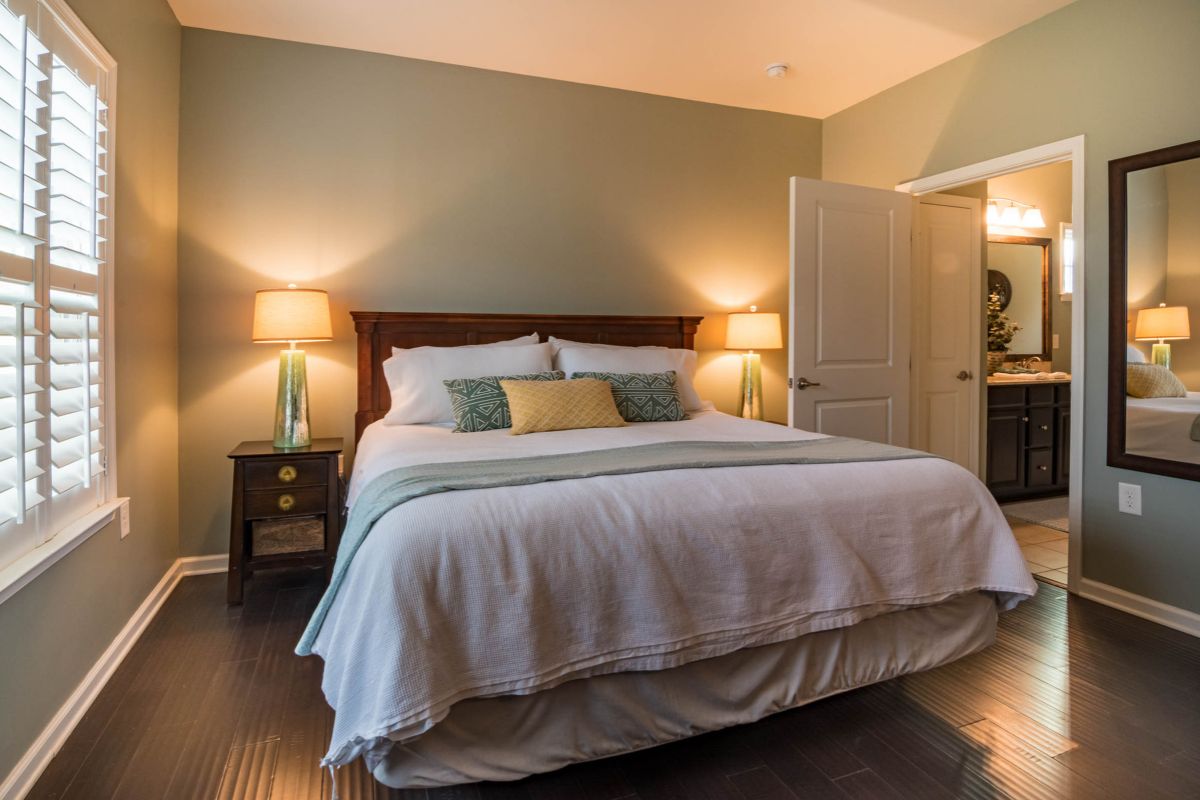The concept of a closet-free bedroom has gained traction among interior design enthusiasts seeking to create space that is both stylish and highly functional. Foregoing the traditional wardrobe can open a room up visually and provide a unique opportunity for creativity in organization and design.
Designing a closet-free bedroom requires careful consideration of how to store clothing and personal items while maintaining a clutter-free environment. Innovative solutions like ottoman beds with hidden storage offer an excellent way to maximize space without compromising on style.
For those who appreciate a minimalist aesthetic or simply have limited space, the integration of furniture with built-in storage is essential. Multifunctional pieces become central to achieving a sleek look while maintaining functionality. The goal is to strike a balance between maintaining easy access to essentials and keeping the bedroom area uncluttered. Emphasizing open spaces, smart organizational tools, and strategic planning ensures that a bedroom without a wardrobe is both practical and visually appealing.
Table of Contents
Key Takeaways
- Innovative furniture with storage is vital for functionality.
- Balance accessibility with a clutter-free environment.
- Strategic design ensures practicality and aesthetic appeal.
Designing for Functionality and Style
Designing a closet-free bedroom that exudes style while maintaining functionality involves strategic planning and smart furnishing choices. This section of the guide will help you navigate through assessing your area, selecting functional furniture, exploring versatile storage options, and incorporating personal style into your space, ultimately creating a harmonious and efficient bedroom environment.
Assessing Your Space
Begin by measuring the dimensions of your bedroom thoroughly. Consider how the physical space can be optimized for both movement and furnishings. For smaller areas, the focus should be on maximizing floor space and utilizing vertical surfaces for storage solutions.
Selecting Functional Furniture
Choose furniture that serves multiple purposes. A bed with built-in drawers underneath can compensate for a lack of a closet by providing ample room for clothing. When looking at pieces like desks or dressers, priorities those with additional compartments or modular designs that cater to ever-evolving storage needs.
Versatile Storage Options
In the absence of a traditional closet, alternative storage solutions are crucial. Open shelving units and hanging racks can fill the void by offering accessible and adaptable storage space. Custom closet systems tailored to the room’s specifications can also provide a sleek, modern design element while ensuring every item has its place.
Incorporating Personal Style
Personal style should shine through in details and finishes. Select furnishings and storage that reflect your aesthetic, whether it’s minimalist, bohemian, or industrial. Focus on cohesive colour palettes and textures that unify the space and create a distinctive, functional space that is wholly yours.
Organization Strategies for Aesthetic Appeal
Creating a closet-free bedroom that balances style and function involves innovative organization strategies. Homeowners can maintain a sleek appearance while ensuring everything has its place, from shoes to accessories.
Creative Use of Bins and Baskets
Bins and baskets serve as versatile storage options that can be aesthetically pleasing and practical. A homeowner might utilize woven baskets under a bed to store out-of-season garments while keeping them accessible. Utilizing clear, stackable bins on closet walls or in a laundry closet helps stay organized and allows for easy identification of contents.
Display Options for Shoes and Accessories
Shoes and accessories often double as decorative elements when displayed tastefully. A dedicated shoe rack positioned against the closet wall or beneath a full-length mirror can turn a functional storage solution into a style statement. For accessories, consider utilizing a mix of hooks and shallow drawers to organize and showcase items effectively.
Editing and Maintaining a Clutter-Free Zone
Maintaining a clutter-free bedroom requires regular editing of belongings. This can mean adopting a less-is-more approach, where every item in the home has a deliberate place and purpose. Encourage periodic reviews of items to edit out what’s no longer needed, maintaining a curated, uncluttered environment.
Budget-Friendly DIY Solutions
Homeowners on a budget might opt for DIY closet systems that can be customized to their space and needs. Using repurposed items like old bookshelves for a DIY closet or implementing clever budget-friendly solutions, such as curtain rods for hanging storage, can be both cost-effective and unique. Simple additions like adhesive hooks or tension rods can create additional space for organizing toys or supplies without the need for a traditional closet system.
Conclusion
Designing a closet-free bedroom that’s both stylish and functional hinges on maximizing space through clever use of furniture and thoughtful placement of storage solutions. By selecting multi-functional pieces like beds with built-in storage and incorporating wall-mounted shelves and racks, one can create a streamlined, clutter-free space. The strategic use of mirrors and a consistent colour palette enhances the room’s sense of openness. This approach ensures that even without a traditional closet, the bedroom remains an organized and tranquil retreat.
















